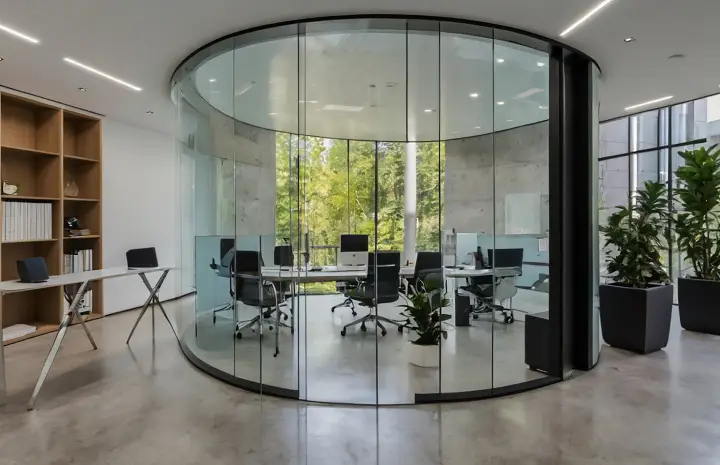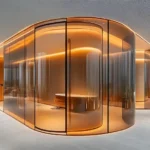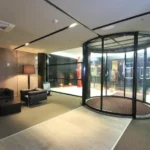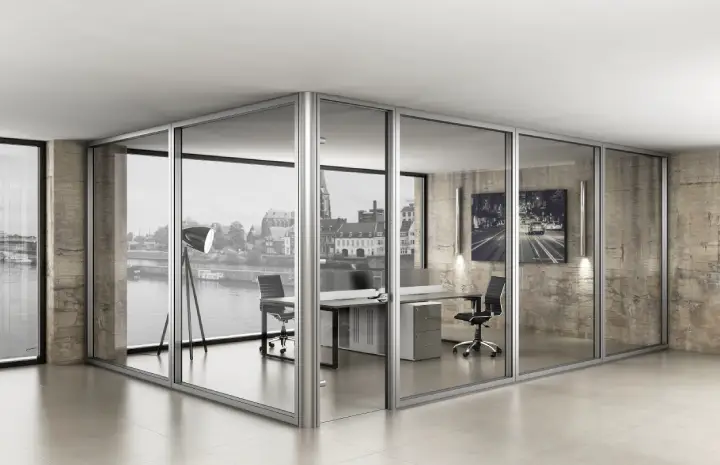Budget vs. Design: How to Plan for Custom Curved Glass Walls
In modern architecture and interior design, custom curved glass walls have become a symbol of innovation, openness, and luxury. They bring fluidity to rigid structures, enhance natural light, and create a stunning visual experience that straight partitions simply can’t match. Whether for offices, showrooms, or high-end residential spaces, curved glass allows designers to blend functionality with art.
But while their aesthetic appeal is undeniable, the challenge lies in balancing creative ambition with financial practicality. Planning for custom curved glass walls requires careful coordination between design intent, structural needs, and budget realities.
Here’s a complete guide to help you plan the perfect curved glass installation — without overspending or compromising on design quality.
Understanding the Value of Custom Curved Glass Walls
Before diving into budgets, it’s important to understand what makes curved glass so unique. Unlike flat panels, custom curved glass walls are created through precision bending and heating processes that shape the glass without compromising its strength or clarity.
They provide numerous advantages:
- Aesthetic fluidity: Eliminating harsh corners creates a continuous visual flow.
- Light optimization: Curved surfaces refract and distribute light more evenly.
- Space perception: Rounded designs make rooms appear larger and more inviting.
- Design flexibility: From soft arcs to dramatic curves, customization is nearly limitless.
These benefits, however, come with additional design and manufacturing considerations — and that’s where proper planning becomes essential.
Step 1: Define the Purpose and Function
Every project starts with intent. Are you designing custom curved glass walls for an office partition, a lobby enclosure, or a residential façade? The function determines the glass type, thickness, and installation method.
For example:
- Offices may require acoustic glass for privacy.
- Retail spaces might favor clear curved glass for maximum transparency.
- Homes could use tinted or frosted curved glass for aesthetics and privacy balance.
Understanding the purpose early on helps estimate the right cost range and prevents unnecessary design revisions later.
Step 2: Balance Budget with Design Complexity
Curved glass pricing is influenced by multiple design factors — radius, curvature type, glass size, and finishing. A tighter curve or complex geometry generally increases fabrication costs.
If you’re working with a limited budget, consider these adjustments:
- Use larger radius curves for gentler bends — they cost less to produce.
- Opt for fewer custom segments and combine them with straight glass sections.
- Limit specialty coatings to high-visibility areas instead of entire walls.
This approach keeps your custom curved glass walls visually stunning without exceeding financial limits.
Step 3: Choose the Right Type of Curved Glass
The glass type has a major impact on both design and cost. Here are the most common options:
- Annealed Curved Glass: Suitable for decorative applications but not ideal for load-bearing structures.
- Tempered Curved Glass: Offers higher strength and safety; often used in offices and public areas.
- Laminated Curved Glass: Adds acoustic and impact resistance, ideal for noise-sensitive environments.
- Insulated Curved Glass: Used for exterior façades to improve thermal efficiency.
Your selection should align with your project’s safety requirements, design style, and environmental conditions. A professional fabricator can recommend the best combination based on your application.
Step 4: Consider Framing and Installation Methods
While frameless glass walls look sleek and contemporary, they demand higher precision during installation. Framed systems, on the other hand, may reduce costs while providing structural stability.
If your budget allows, frameless custom curved glass walls create the most seamless aesthetic. However, hybrid options — partial framing with concealed profiles — can achieve a similar effect at a lower price.
Proper installation planning also reduces long-term maintenance costs. Ensure your contractor has experience handling curved panels, as incorrect fitting can cause stress cracks or misalignment.
Step 5: Account for Engineering and Safety Standards
Curved glass walls aren’t just design features; they’re engineered systems that must meet safety codes and load-bearing requirements. Budget allocation must include structural analysis, mounting hardware, and safety glass certifications.
Cutting costs in this stage can lead to expensive future repairs or safety hazards. Always ensure your design complies with local building standards and load calculations. This not only protects occupants but also guarantees the long-term performance of your custom curved glass walls.
Step 6: Factor in Customization Options
Customization adds character but also affects pricing. Elements like frosted finishes, etched logos, tinted tones, or integrated lighting can elevate the overall look.
To manage costs effectively:
- Prioritize aesthetic details where they’ll make the most visual impact.
- Use standard finishes for less visible sections.
- Consult your designer to create a balance between visual drama and practicality.
Small touches of personalization can transform standard custom curved glass walls into distinctive architectural features without exceeding your financial ceiling.
Step 7: Evaluate Long-Term Value Over Initial Cost
A common mistake in planning is focusing solely on upfront pricing. While curved glass installation may seem costly initially, its long-term value often outweighs the investment.
Consider the benefits:
- Durability: Tempered or laminated curved glass lasts for decades.
- Low maintenance: Easy to clean and resistant to corrosion or fading.
- Timeless aesthetics: Curved glass never goes out of style, ensuring lasting appeal.
Investing in quality materials and professional installation reduces replacement costs and preserves property value. High-quality custom curved glass walls also enhance visual impact, attracting clients and elevating your brand image if used in commercial spaces.
Step 8: Work Closely with Designers and Fabricators
Successful projects result from collaboration. Early consultation between architects, designers, and glass manufacturers ensures that both creative and financial goals align.
Provide clear specifications — including radius, dimensions, and intended use — to receive accurate quotes and avoid unexpected costs later. An experienced team can guide you in material selection, fabrication methods, and structural design to achieve your desired aesthetic within budget.
Common Mistakes to Avoid When Planning Curved Glass Walls
- Overlooking radius feasibility: Not all designs can be physically achieved — check manufacturing limits first.
- Ignoring site measurements: Minor deviations can disrupt glass alignment and increase rework costs.
- Skipping acoustic or thermal considerations: In offices, ignoring soundproofing needs can cause discomfort.
- Choosing unverified installers: Improper handling during installation can lead to costly glass breakage.
Avoiding these mistakes ensures your custom curved glass walls deliver both design excellence and performance reliability.
How to Maximize Aesthetic Impact on a Budget
If cost is a major concern, creative design strategies can help achieve a luxurious look without excessive spending:
- Combine curved glass sections with straight partitions.
- Use frosted or patterned finishes only in focal zones.
- Utilize partial-height curved walls for visual separation instead of full enclosures.
- Incorporate LED lighting to highlight curves without adding major structural complexity.
Smart design choices ensure that your space retains sophistication and flow — even with budget limitations.
Conclusion
Planning for custom curved glass walls is all about balance — aligning your design vision with realistic cost expectations. By understanding fabrication techniques, selecting the right materials, and prioritizing design essentials, you can create stunning glass installations that stand the test of time.
A well-planned curved glass project adds architectural elegance, maximizes natural light, and enhances spatial harmony. With proper budgeting and collaboration, achieving a sleek, modern aesthetic doesn’t have to mean exceeding financial limits.
In the end, it’s not about choosing between design and budget — it’s about integrating both seamlessly into a result that’s beautiful, functional, and lasting.




